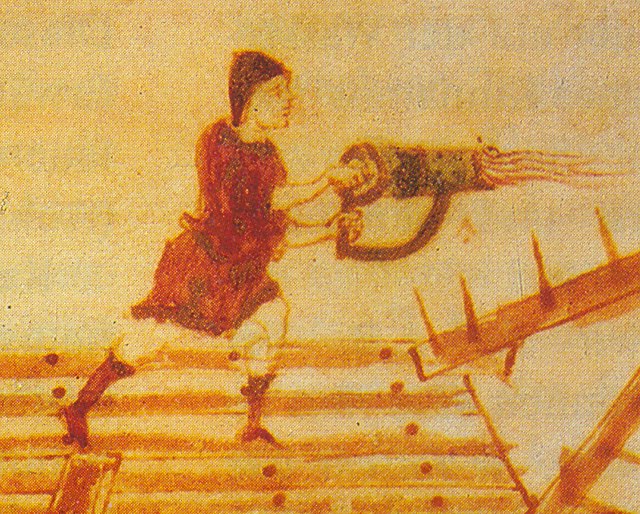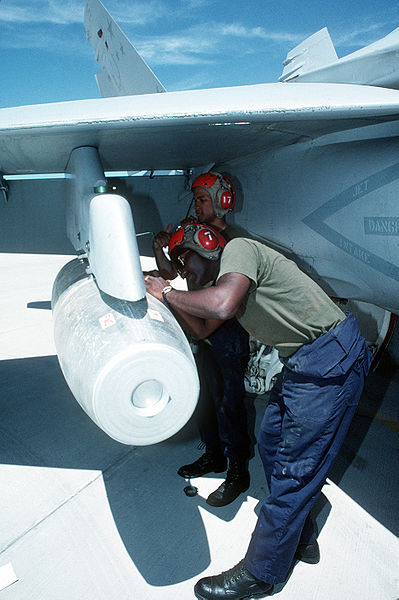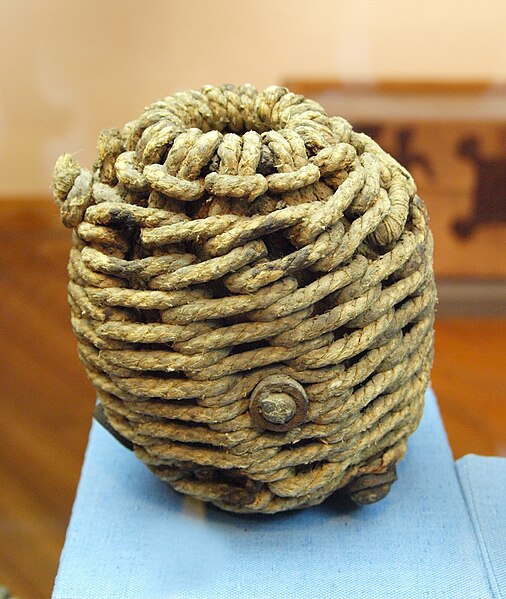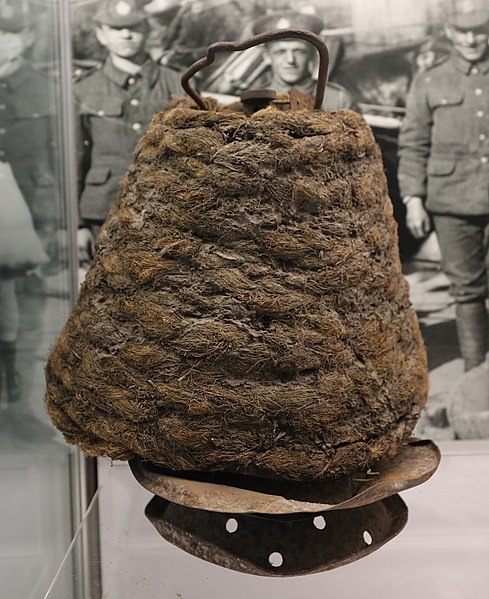Greek fire was an incendiary chemical weapon manufactured in and used by the Eastern Roman Empire from the seventh through the fourteenth centuries. The recipe for Greek fire was a closely-guarded state secret, but historians speculate it may have been made by combining pine resin, naphtha, quicklime, calcium phosphide, sulfur, or niter. Roman sailors would toss grenades loaded with Greek fire onto enemy ships or spray it from tubes. Its ability to burn on water made it an effective and destructive naval incendiary weapon, and rival powers tried unsuccessfully to copy the material.
Στόλος Ρωμαίων πυρπολῶν τὸν τῶν ἐναντίων στόλον, "The Roman fleet burn the opposite fleet down" – A Eastern Roman Empire / Byzantine war ship using their "secret weapon" Greek Fire against a ship belonging to the rebel Thomas the Slav, AD 821. (12th century illustration from the "Madrid Skylitzes").
Use of a cheirosiphōn ("hand-siphōn"), a portable flamethrower, used from atop a flying bridge against a castle. Illumination from the Poliorcetica of Hero of Byzantium.
Proposed reconstruction of the Greek fire mechanism by Haldon and Byrne
Detail of a cheirosiphōn
Incendiary weapons, incendiary devices, incendiary munitions, or incendiary bombs are weapons designed to start fires or destroy sensitive equipment using fire, using materials such as napalm, thermite, magnesium powder, chlorine trifluoride, or white phosphorus. Though colloquially often known as bombs, they are not explosives but in fact are designed to slow the process of chemical reactions and use ignition rather than detonation to start or maintain the reaction. Napalm, for example, is petroleum especially thickened with certain chemicals into a 'gel' to slow, but not stop, combustion, releasing energy over a longer time than an explosive device. In the case of napalm, the gel adheres to surfaces and resists suppression.
Mark 77 napalm bomb is loaded in a June 1993 training exercise onto a US Marine Strike Fighter Squadron F/A-18A Hornet aircraft
A 17th century fire or light ball from Veste Coburg, Germany
An incendiary bomb dropped on Southend-on-Sea in 1916
A German World War II 1 kg incendiary bomb








